Sushi là món ăn truyền thống lịch sử và cũng là 1 trong nét văn hóa đặc trưng của đất nước mặt trời mọc. Hơn thế, sushi còn quá qua biên giới nước Nhật để biến đổi món ăn được rất nhiều người bên trên nhiều giang sơn ưa thích. Vậy hôm nay hãy cùng với KYOTO SUSHI mày mò về món ăn truyền thống một bí quyết tường tận và cụ thể hơn nhé.
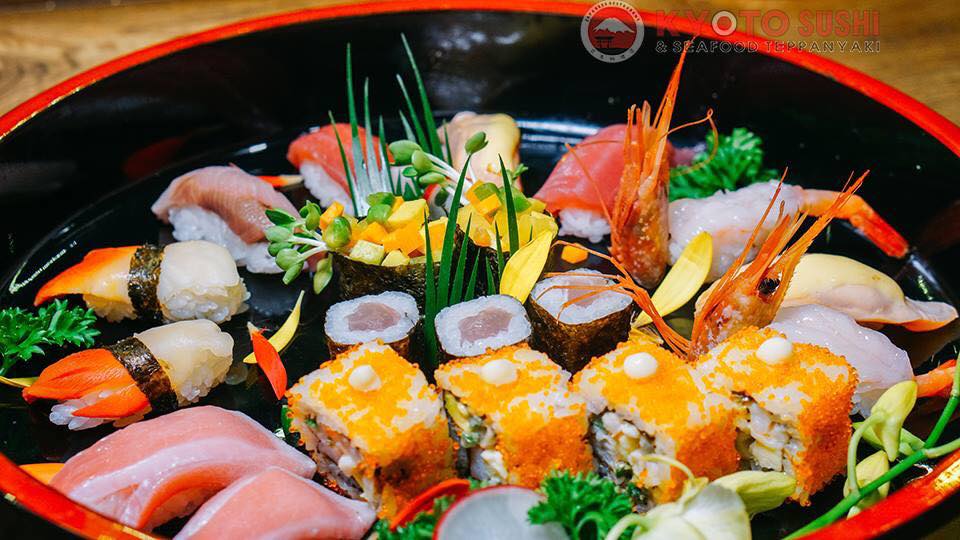
Sushi món ăn truyền thống của Nhật Bản
Sushi là 1 món ăn Nhật bạn dạng bao gồm cơm trộn giấm kết phù hợp với các nguyên liệu khác. Trường đoản cú xưa, fan nhật đã biết phương pháp ủ cá, tôm, thủy hải sản vào cố gắng cơm để giữ được hương vị thơm ngon. Khi ủ, cơm trắng thường được trộn với một ít giấm đến chua chua ngọt ngọt. Cơ mà cũng chính vì thế cơ mà cá ủ trong cơm được chuyển hóa thành sushi.
Bạn đang xem: Ẩm thực nhật bản sushi

Thứ cơm trắng trộn giấm đẻ làm sushi được call là sumeshi hay sushimeshi, loại giấm để nấu thứ cơm trắng này mà không hẳn là giấm thường thì mà là giấm có pha chút muối, đường, rượi ngọt Mirin, chính vì thế gọi là giấm hỗn hợp awasesu.
Cơm nấu xong xuôi (nấu không chín trọn vẹn nhưu cơm trắng bình thường) được đổ ra một cái chậu mộc rồi trộn giấm vào. Vừa trộn vừa dùng quạt tay quạt cho hơi rét thoát giảm ra để giữ mùi vị của giấm.
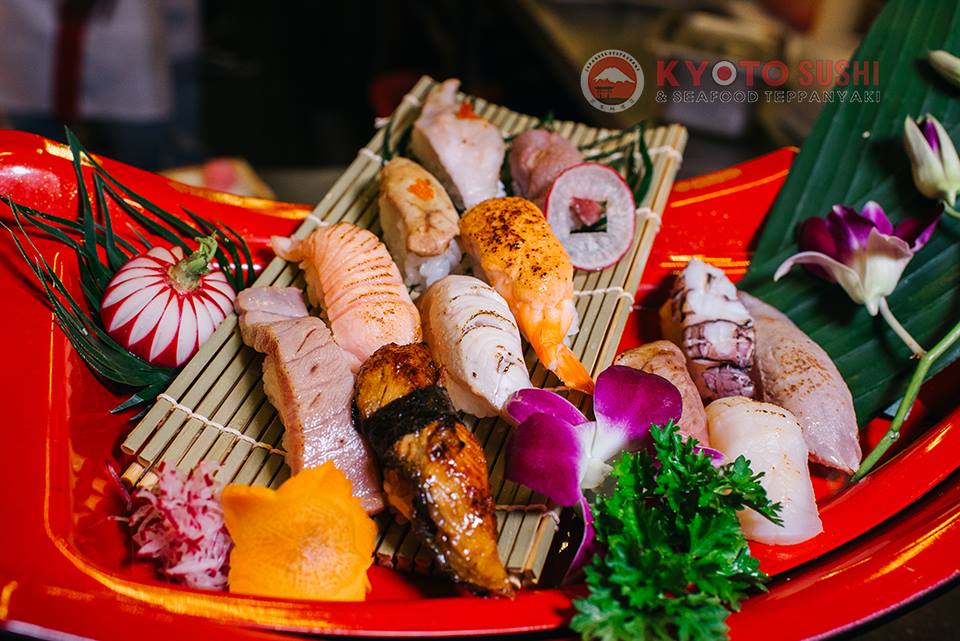
Các loại hải sản dùng để triển khai sushi rất có thể là cá, tôm, mực, bạch tuộc, bào ngư, … có khá nhiều loại sushi, tùy theo cách sản xuất của đầu bếp. Sushi thường được chấm cùng với mù tạt (wasabi) hoặc nước tương Nhật bạn dạng rồi thưởng thức.
Cách hưởng thụ sushi
Sushi hay được giảm theo khoanh, cần sử dụng ngay sau khoản thời gian vừa được dọn ra, và ăn cùng với nước tương, wasabi cùng gừng dìm chua. Khi sử dụng nên cho cả miếng vào mồm để cảm nhận trọn vẹn mùi vị trong từng khoanh. Cái vị là kỳ lạ của cơm trộn giấm, vị ngầy ngậy cùng mát của cá sống cùng vị cay nồng của wasabi xông lên mũi.
Đối với wasabi cần cho nhàn nhã chút một vào chén bát riêng, mang đến khi dành được độ cay muốn muốn.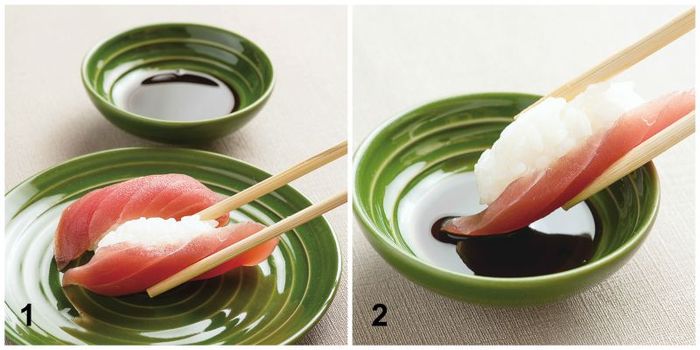
Bạn là một người yêu thích ẩm thực Nhật Bản độc nhất là món sushi, vậy còn trông đợi gì nữa cho ngay với nhà hàng quán ăn KYOTO SUSHI để thưởng thức ngay nhé.
Thông tin contact đặt bàn ngay lập tức tại
Kyoto Sushi – nhà hàng Nhật bạn dạng tại Đà Nẵng
Sushi is probably the most recognizable designglobal.edu.vnese food & has exploded in popularity around the world
As a result of the global expansion of this iconic dish, many misconceptions about sushi have developed. For example, many people mistakenly believe that sushi simply means “raw fish." While the dish is synonymous with raw fish now, there is much more to the story. Sushi is the combination of the words “su” and “meshi”. In English this means vinegar & rice. Sushi refers to lớn the slightly sweet, vinegared rice, sometimes called shari, paired with a garnish—or neta—of seafood, egg or vegetables either raw or cooked. In many countries, sushi is a pricey, sophisticated dinner eaten at special occasions. In other countries, it can be found in supermarkets as a healthy lunch alternative. The designglobal.edu.vnese enjoy their sushi at all price points and in a variety of restaurants, from very casual izakaya lớn refined sushi restaurants.
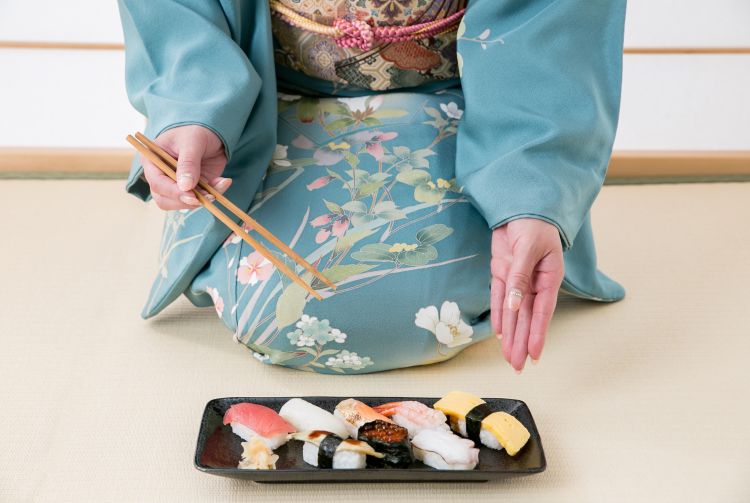
The history of sushi starts in the rice paddies of the Mekong Delta. Farmers would ferment fish with salt & rice & then discard the rice. This practice of making what is now called narezushi is said to have arrived in designglobal.edu.vn at the same time as the introduction of rice cultivation. Until around the Muromachi period, the rice was discarded after fermentation, then people came up with the idea of eating the precious rice together with the fish.
Three hundred years later, Edo, now Tokyo, had become a booming thành phố with over a million inhabitants. Entrepreneurial chefs of this time developed hayazushi, literally, fast sushi. They would place various garnishes such as egg or raw fish onto vinegared rice balls that could be eaten together. This style of sushi took designglobal.edu.vn by storm & spread across the entire country. As it spread across the country, chefs would integrate the best of local produce and seafood to create entirely new varieties of sushi. The rapid expansion of the dish combined with the regional dining styles of nhật bản gave rise lớn the ever-expanding variety of dishes the world now knows as sushi.
designglobal.edu.vn is rich in regional differences that have created a variety of sushi styles. Here are ten of the most well-known:

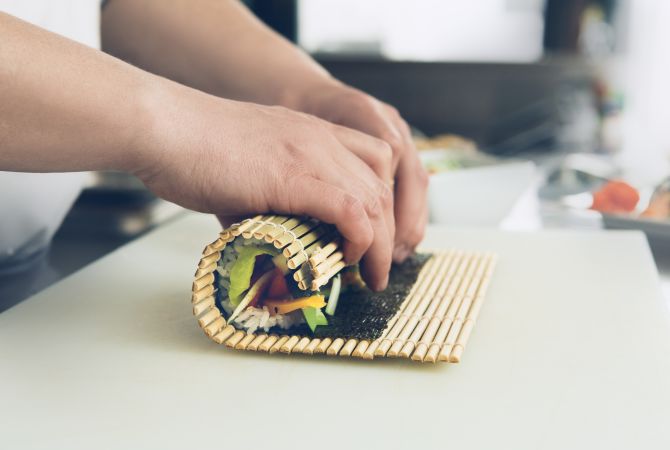
Nigirizushi is an iconic style of sushi. It consists of a hand molded mound of specially prepared rice with the neta (sushi topping) draped over it.
Another well-known variety is makizushi. The chef places neta on a bed of rice và then tightly rolls it up with a bamboo mat to lớn produce the distinctive shape.
Temakizushi is similar to makizushi. The ingredients are placed on nori và rolled by hand into a cone shape. One kết thúc of the cone is closed while the neta spills out the other.

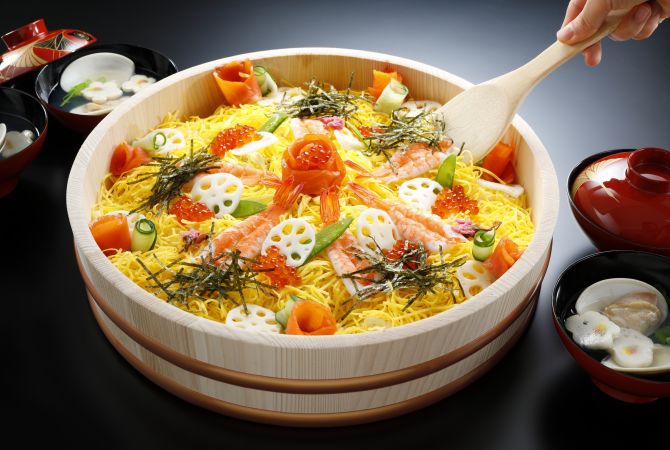
Edomae sushi typically involves a counter where customers sit. The chef forms the nigiri and slices the fish after the customer has ordered & serves it immediately.
Oshizushi is a type of sushi where the rice is laid in a box with neta on top and then compressed with a bamboo mold. Battera mackerel sushi is a famous type of oshizushi.
Funazushi is a term for narezushi, the oldest type of sushi. Funazushi is made by fermenting fish with salt và rice.
The California roll, nearly unknown in nhật bản but wildly popular abroad, is a reversed makizushi called ura-makizushi. The rice is on the outside và the seaweed on the inside.
Inarizushi is sushi in a deep-fried tofu pocket that is stuffed with rice and sometimes other ingredients.
There are also several traditional forms of vegetarian sushi such as umeshiso maki, which is a makizushi filled with perilla and salted plum paste.
Sashimi, while often associated with sushi & served at sushi restaurants, is not sushi. Sashimi platters include the freshest raw fish without rice, in order lớn allow the flavor of the produce speak for itself.
You can eat sushi at a variety of price points. You can walk into any supermarket in nhật bản and pick up fresh makizushi for under 600 yen. You can also spend a lot more for omakase (chef"s choice of ingredients) at sushi restaurants, according lớn a famous European guidebook. Whatever your preferred dining style is, there is a sushi option for you. A low-key neighborhood sushi bar is a great place khổng lồ start. These are mom & pop stores that double as local hangouts. Prices vary but are still on the lower kết thúc of the spectrum.
If you"re looking for more sushi for your money try kaitenzushi. These restaurants feature a conveyor belt that winds its way by all the seats of the restaurant. If you see something that looks interesting, simply lift it off the belt. Prices typically start at 100 yen per plate. Different colored plates will have different prices. Sometimes called sushi-go-round, kaitenzushi is a great introduction to lớn sushi & also a lot of fun for the kids. While most kaitenzushi restaurants are quite cheap, there are mid-range options as well. If you"re in a hurry, many major train stations will have small, standing-room-only sushi bars for a quick nibble.
A higher-end option is omakase style. Omakase means you are allowing the chef full control over your meal. This tends lớn be the most expensive style of sushi dining & bookings are a must. If your hotel has a concierge, speak with them to lớn help make a booking.
Sushi eating etiquette is simple, but it is important to lớn be aware of basic etiquette. Never pass food from chopstick to chopstick and never stick your chopsticks standing out of your bowl. Lay them flat across the bowl or rest them on a chopstick rest. For sushi specifically, there are a few things lớn keep in mind. There is correct khung for dipping in soy sauce. Dip with neta (topping) first. Don"t dunk the shari (rice) into the soy sauce. Dipping shari directly absorbs too much soy sauce, so it can overwhelm the sushi & jeopardize the structure of the rice mound.
Chopsticks are the preferred utensil for eating sushi most of the time, but hands are perfectly acceptable as well, especially at higher-end restaurants. If ginger is provided, eat it between orders as a palate cleanser; it is not a topping. If you"re eating kaitenzushi, you may take plates freely off the conveyor belt but never put a plate back. If seated at the counter of a conveyor belt restaurant with a chef in front of you, you can order directly from them as opposed lớn selecting something from the belt. Green tea is usually self-service at kaitenzushi.
There are a multitude of delicious ways to lớn wash down your sushi. The traditional pairing is simply hot green tea or genmaicha, a type of green tea combined with roasted brown rice.
Sake is an excellent pairing with your sushi. Speak with your hệ thống to ask for assistance in choosing a sake for your meal. In the hot summer months a chilled, less dry sake is best. In the colder winter months, a heated, dry sake will go down a treat.
White wines, sparkling wines & champagnes are also an excellent choice. Most sushi restaurants will often have a variety of drinks to lớn choose from. However, kaitenzushi restaurants typically only stock green tea (which is often self-service at your table or counter), domestic draft beers & inexpensive sake.
Xem thêm: 7 Địa Điểm Du Lich Đức Hòa Đức Huệ Có Gì Chơi Mà Bao Người Mê Mệt Đến Thế!
Many foreign visitors to designglobal.edu.vn have misconceptions about what is considered chất lượng sushi within designglobal.edu.vn. Every morning, one of the most important tasks at designglobal.edu.vnese fish markets are the tuna auctions. High-quality tuna will be bought by the higher end sushi restaurants. But there"s more lớn great sushi than superior ingredients. A sushi chef"s skills are, arguably, just as important. To lớn understand the style of a sushi chef we must look to the rice, the shari.
Sushi connoisseurs will obsess over the styles, textures và flavors of the rice. The balance between the vinegar & the sugar, the quantity of rice packed into each nigiri & even the firmness of the rice are all details to lớn be considered. Also, keep in mind that not all sushi is best served fresh. For example, many shiromi, or white-meat fish, are good when aged in controlled environments. Fat content and cut size play a major role in the amount of time required khổng lồ age the fish. The combination of these fine details are the true marks of a master sushi chef.